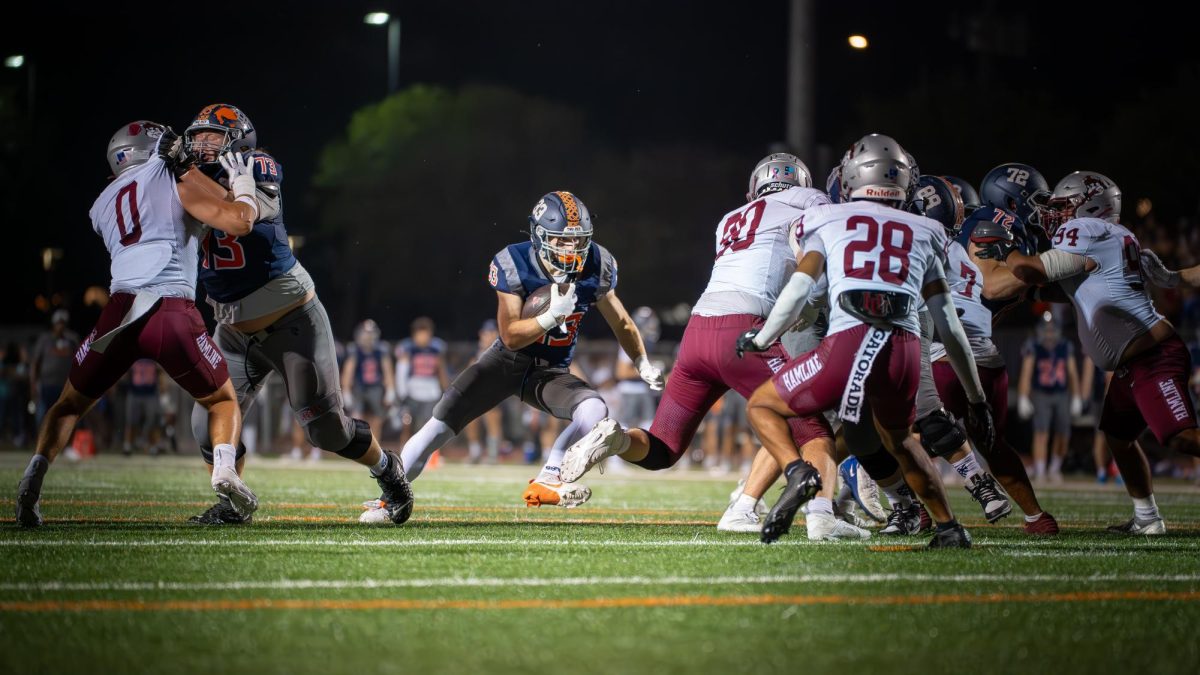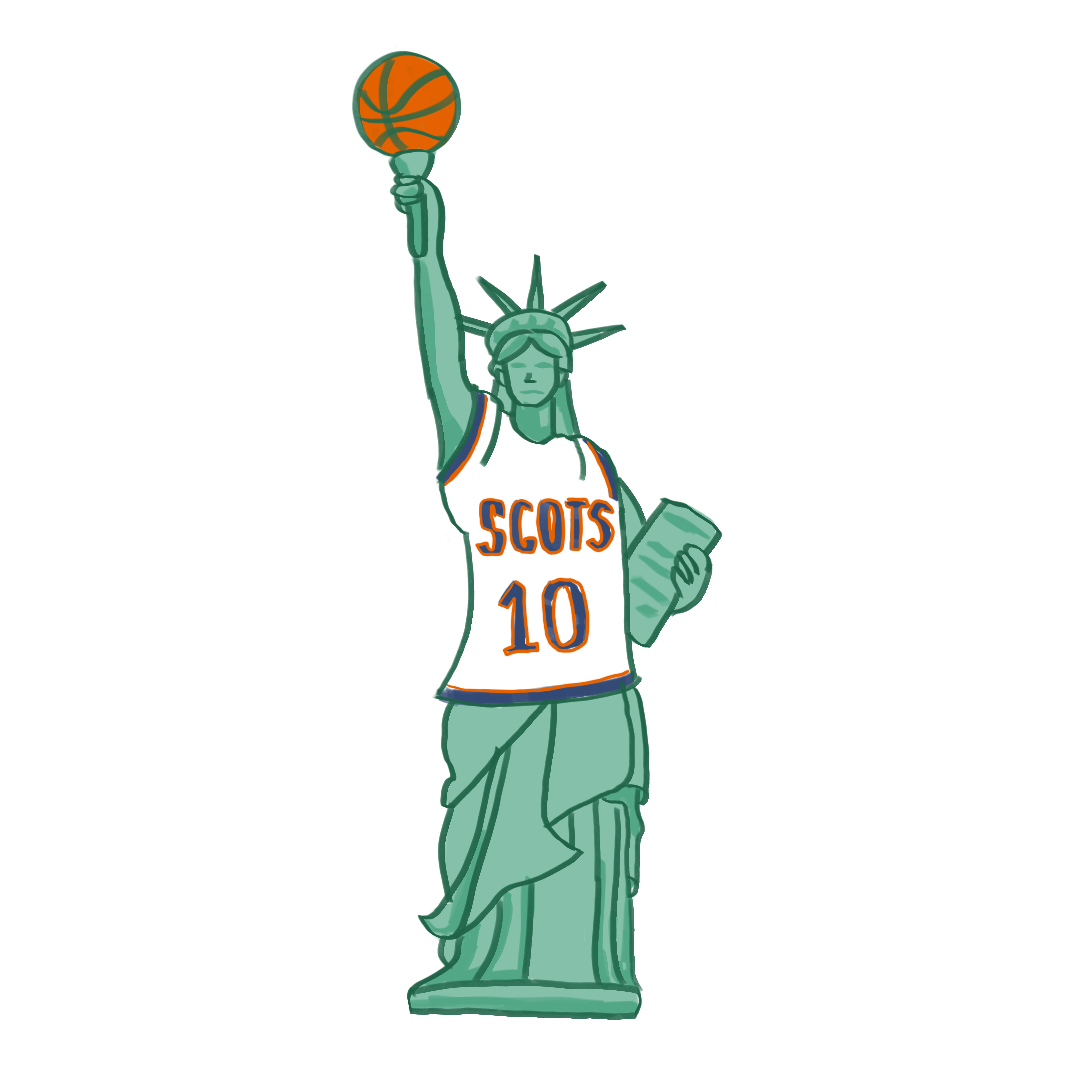In 2015 at Macalester, both the Men’s and Women’s Soccer teams enjoyed success. The Men’s team contested in the NCAA Division III playoffs, while the Women’s team competed in the MIAC playoffs. Both teams enjoyed a tremendous amount of support from a dedicated fan base that rallied behind the teams well before it was obvious they would make the playoffs.
At most schools, and in most of the United States, soccer plays a clear second fiddle to the more “conventional” sports of American football and basketball. But at Macalester, this is not the case; soccer is one of the premier sports.
“It’s super Macalester to go to soccer because soccer isn’t as big in the United States, and people are more willing to support soccer,” Rae Hohle ’17 said. Hohle a midfielder on the Women’s team who started 14 games in 2015, was asked why she believed that soccer receives a disproportionate amount of support at Macalester.
Macalester’s cheers are more prevalent at soccer games than at any other athletic events. These cheers are quite famous among the student body and somewhat infamous among opponents. Students are taught the cheers at orientation and even those who do not come to sporting events could recite “Drink Blood. Smoke Crack. Worship Satan. Go Mac!” if asked.
“When we hear a crowd yelling, it really does help us out,” Hohle said. This provides a feedback loop, where cheers help the team do well, which in turn incentivizes more cheers, and has the end result of bringing even more fans to games.
Even when the teams are not performing as well as they did in 2015, they always receive significant support. “The support didn’t really falter when we weren’t doing well. We definitely get more when doing well, but it doesn’t falter,” noted Hohle. In contrast to football, which received markedly more support last year after making the playoffs than this year when failing to do so, soccer continues to receive fans whatever their record.
The support for soccer at Macalester is not only limited to the Scots, but extends to professional leagues. Enter the dorms on a Saturday or Sunday morning, and it is likely that a Premier League game will be on a TV somewhere. Walk around Café Mac and somebody will be wearing a soccer jersey.
While Macalester’s students have a generally positive view of soccer, the country at large is not the same. As is the case with many current issues, Macalester students could be labeled “progressive” when it comes to soccer. The Harris Poll reports that only 4 percent of Americans who follow one or more sports choose soccer as their favorite, a 1 percent increase from the same poll in 1985.
Similarly, one could point to the decline in youth participation in prestiged sports such as football and baseball, but the rise in soccer participation can only be considered marginal. According to US Youth Soccer, 3,020,442 players were registered by the organization in 2000, while 3,055,148 players were registered in 2014. At the professional level, the increase in television revenue to 90 million dollars in 2015 can be considered the sign of a growing market. But 90 million is nothing to the almost 7 billion dollars the NFL hauls in annually from broadcasting deals. That being said, MLS attendance has skyrocketed in recent years to over 21,000 attendees per game, from under 14,000 in 2000, while expanding from 20 teams today to 24 by 2020, including St. Paul’s own Minnesota United FC.
The initial assumption behind all of this data is that soccer’s popularity has plateaued as of late. Soccer has long been afflicted by stereotypes of being a soft sport played by “pretty boys” who run around embellishing contact, also known as “flopping.” This prejudice towards the sport is quickly being removed from youth circles, but its existence is impossible to deny. Even before soccer is declared in a static state of growth, there are several underlying questions that must be answered. Who is answering the polls? Polls that are conducted in English, such as the Harris Poll, automatically eliminate one of the major demographics in Latin@ Americans. In a country where almost a third of the population will speak spanish by 2050 cutting them from the equation leaves the results insignificant. Often South and Central American immigrants bring with them their passion for soccer. When Central American teams come to the United States to play they often attract massive crowds outweighing those at MLS games. The answer to the question, “How does America feel about soccer?” is in no way clear. It would appear that Americans are not resentful, but rather ambivalent towards soccer. But with changing demographics and a growing selection of teams to choose from, think MN United FC, the future looks bright for soccer in the United States.
Both in the Macalester community and in the United States, the perception of soccer is undoubtedly a contentious subject. There are always, and will always be, those who love the game, as well as those who do not. Whether or not we enjoy the sport or if our perception of it is changing, it is certainly worth discussing.







Angela Mackay • Sep 11, 2019 at 8:57 am
Hi there, is it rite to simply study from books not to visit world wide web for most up-to-date updates, what you say friends?
Dan Dyer • Sep 10, 2019 at 3:45 am
One thing I’d like to comment on is that fat burning plan fast may be possible by the proper diet and exercise. People’s size not simply affects appearance, but also the overall quality of life. Self-esteem, depressive disorders, health risks, and also physical skills are affected in weight gain. It is possible to just make everything right but still gain. Should this happen, a condition may be the offender. While an excessive amount food and not enough physical exercise are usually responsible, common health concerns and widespread prescriptions might greatly amplify size. Thanks alot : ) for your post right here.
Connor Watson • Sep 9, 2019 at 12:49 am
Only a smiling visitant here to share the love (:, btw outstanding layout.